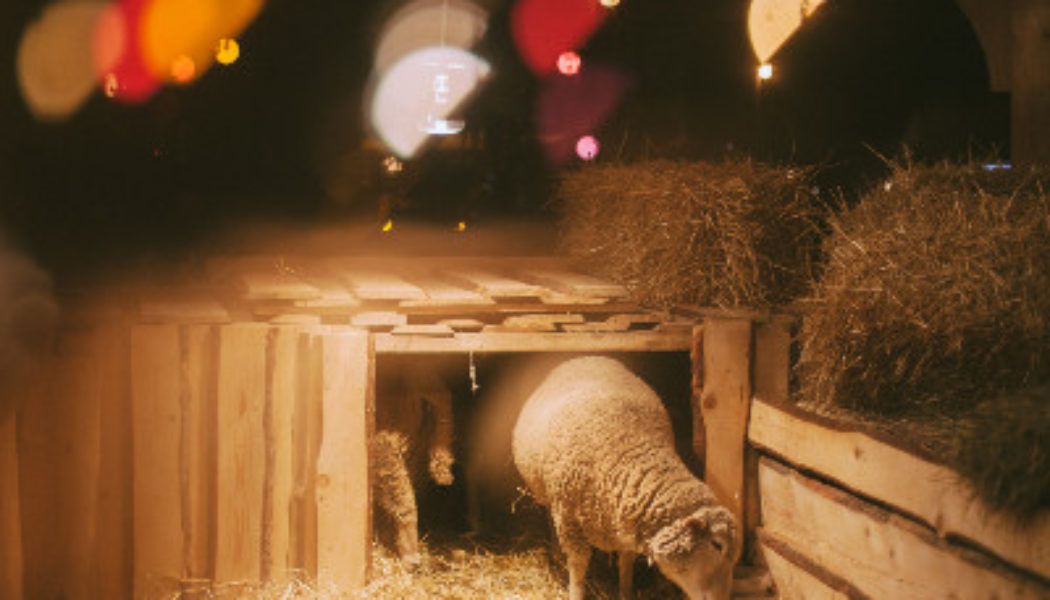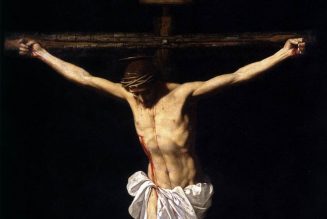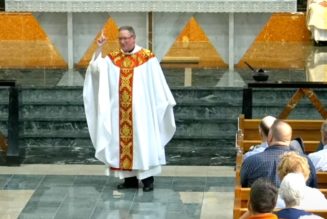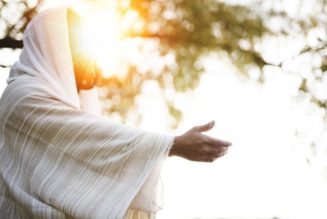Every year, various myths about Christmas circulate. Some are innocent misunderstandings of things from the Gospels, while others are downright hostile.
One of the most common ideas is that Christmas is based on a pagan holiday, so it’s really “pagan” in origin.
This claim is made by some secularists and even by certain Protestants. Before I was Catholic, I knew members of my Protestant congregation who didn’t celebrate Christmas because of its “unbiblical” pagan origins.
Let’s see what the historical evidence has to say about some of these myths.
Not a matter of faith
Non-Christians who delight in saying that Jesus wasn’t born on Dec. 25 sometimes seem to take pleasure in the idea that they’re somehow undermining Christianity, but they’re not.
Jesus being born on Dec. 25 is not a matter of faith. The Church may celebrate Jesus’ birth on this day, but it’s not a matter of Catholic doctrine. It’s a matter of custom.
As we’ll see, there were a number of dates for Jesus’ birth proposed in the early Church, and it is still celebrated on other days in some parts of the Christian world.
Too cold for sheep
It’s sometimes claimed that Jesus couldn’t have been born on Dec. 25 because Luke reports that shepherds were tending their flocks the night Jesus was born (cf. 2:8). It would have been too cold for that in December, so Jesus must have been born in a warmer time of year.
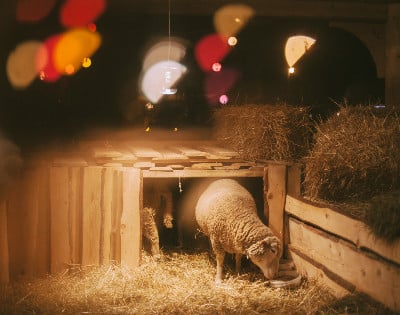
Adobe Stock images
This is nonsense. First, winters are mild in Israel. Bethlehem is just six miles from Jerusalem, where the average temperature on Dec. 25 ranges from 55 degrees in the day to 43 degrees at night. It’s still well above freezing.
Second, sheep do just fine in the cold. That’s why they’re covered in wool! As a species, sheep grew up outdoors, and they haven’t lost their cold resistance due to domestication. (If anything, humans have bred them to have even thicker wool.)
If you google “winter sheep care,” you’ll find websites advising you not to keep your sheep indoors all day in winter (they’ll go crazy) and not to be afraid of having them outside (they’re covered in warm, water-resistant wool). You’ll also find lots of pictures of domesticated sheep casually strolling around in the snow.
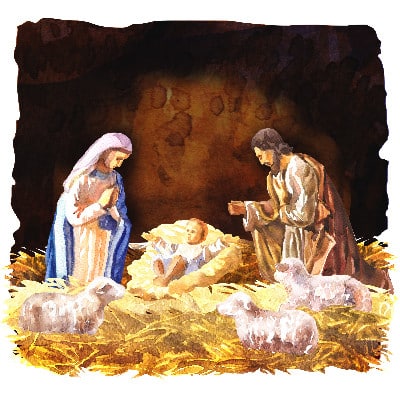
Another charge is that Jesus couldn’t have been born in December because the shepherds had lambs in their flocks, but lambing season is in the spring. However, while some breeds of sheep lamb in the spring, other sheep breed all year round and do not have a consistent lambing season. Also, at least in English, a sheep is still considered a lamb until it is one year old, meaning lambs could be present any time of the year, even for breeds that have a lambing season. Most importantly, Luke nowhere mentions lambs. They’re just not in the text. This idea is a product of people’s imaginations.
Finally, the shepherds around Bethlehem do keep sheep outdoors, even on Dec. 25. According to the “Handbook of Biblical Chronology” by Jack Finegan, “William Hendricksen quotes a letter dated Jan. 16, 1967, received from New Testament scholar Harry Mulder, then teaching in Beirut, in which the latter tells of being in Shepherd Field at Bethlehem on the just-passed Christmas Eve, and says: ‘Right near us a few flocks of sheep were nestled. Even the lambs were not lacking. … It is therefore definitely not impossible that the Lord Jesus was born in December.’”
A pagan holiday
What about the claim that celebrating Christmas on Dec. 25 is based on a pagan holiday?
Even if that were true, so what? When faced with a popular holiday that people find objectionable, it’s common to create an alternative, wholesome celebration.
For example, some Protestant churches hold “Reformation Day” or “harvest festival” celebrations as alternatives to Halloween, and some Catholics have their children dress up as saints rather than ghosts and monsters.
If early Christians decided to celebrate Christ’s birth opposite a pagan holiday to subvert it and give Christians an alternative, wholesome thing to celebrate, that would be a good thing.
Further, this wouldn’t mean that Christmas is “really” pagan. It would mean that Christmas is really anti-pagan.
When a Protestant church celebrates Reformation Day to commemorate the publication of Martin Luther’s 95 theses on Oct. 31, 1517, they are not really celebrating ghosts and monsters. They’re really celebrating the Reformation; they’re just doing it in opposition to a pop culture ghosts-and-monsters celebration.
In the same way, if Christians timed Christmas to compete with a pagan holiday, they wouldn’t be celebrating a pagan deity. They were celebrating Christ’s birth! That would make their actions anti-pagan.
Which pagan holiday?
If Christmas was timed to compete with a pagan holiday, which would it have been?
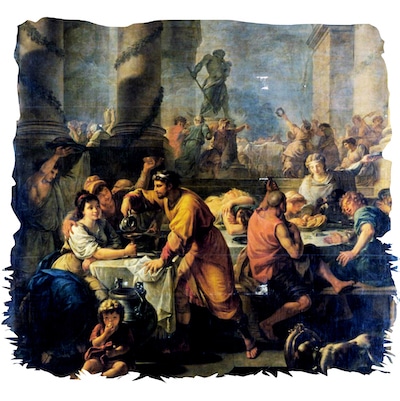
Saturnalia by Antoine Callet. Public domain
Some sources link Christmas with the Roman holiday Saturnalia, which was a festival in honor of the god Saturn. For Saturnalia, people would shut their businesses, wear festive clothing, have a banquet, get drunk, gamble, reverse roles (such as having masters serve slaves), give each other gifts (often cheap gag gifts), and elect a mock “king of Saturnalia” to preside over the festivities.
But there is a major problem claiming that Christmas is an alternative to Saturnalia. This Roman festival was originally celebrated Dec. 17, though by the time of the Republic it extended through Dec. 23. So, Christmas wasn’t held until after Saturnalia was over.
Sol Invictus
Today, many authors link Christmas with the birthday of Sol Invictus — that is, the sun god Sol, who was nicknamed Invictus or “the Unconquerable.” This was celebrated on Dec. 25.
But we have no early Christian sources saying, “We decided to celebrate Christmas on Dec. 25 to compete with Sol Invictus.” That means that the idea is sheer speculation, not something that we have evidence for.
It’s not even good speculation, because the only thing the two celebrations have in common is the date, but that doesn’t mean one is based on the other.
For Christians to want to compete with Sol Invictus, the latter holiday would have to be something worth competing with.
That might be the case if Sol Invictus was a major Roman god, if the Dec. 25 celebration was an important one, and if it was longstanding and deeply entrenched in Roman culture — thus creating social pressure for Christians to find an alternative to it.
But none of those things are true. Sol Invictus was not a major Roman deity. Sol wasn’t even the most popular solar deity (that would be Apollo), and scholars today don’t know a great deal about the worship of Sol because the Romans didn’t talk about him that much. He simply wasn’t that important.
Dec. 25 wasn’t a major festival of the god Sol. It was a single-day celebration, but Sol had multi-day celebrations in August and October.
Neither was Dec. 25 a longstanding festival. Sol’s oldest celebration was in August, and we have no evidence of Dec. 25 being celebrated as the birth of Sol Invictus before A.D. 274. Some scholars argue that the celebration was instituted by the Emperor Aurelian when he dedicated a temple to Sol in that year.
Sol Invictus thus appears to be a recent holiday, it was a lesser one, and Sol was not a major deity. Christians would not have felt the need to compete by placing Jesus’ birth opposite it.
Christmas first
If it is true that Sol Invictus was not instituted until A.D. 274, then we have evidence that the timing of Christmas could not have been based on it, because we know Christians were already celebrating on Dec. 25.
Around A.D. 204, St. Hippolytus of Rome wrote a commentary on the Book of Daniel, and he states, “For the first advent of Our Lord in the flesh, when he was born in Bethlehem, was December 25.”
We also have an ancient statue of Hippolytus — rediscovered in 1551 — that has his calendrical calculations inscribed on it, and these also mention Christ’s birth on Dec. 25.
These pieces of evidence indicate that some Christians were already commemorating Christ’s birth decades before the institution of Sol Invictus.
Why Dec. 25?
Could the causal arrow be pointing the other way? Could Romans have based Sol Invictus on the date of Christmas?
Probably not. There was another, very obvious reason why Romans would dedicate a temple to Sol or celebrate his birth on Dec. 25 — it was the day of the winter solstice.
 The winter solstice is the shortest day of the year, after which the days begin growing longer — making it an important day for sun worshippers all over the world.
The winter solstice is the shortest day of the year, after which the days begin growing longer — making it an important day for sun worshippers all over the world.
Technically, because the Julian calendar is slightly off in reckoning the length of the year, the astronomical winter solstice had drifted slightly from Dec. 25, but the latter date was the conventionally recognized date by tradition, so it was the ritually important one in Rome.
What about Christians? Could the fact that Dec. 25 was the winter solstice have played a role in their celebrating it as Jesus’ birth?
Malachi 3:20 says that for those who fear God, “the sun of justice shall rise with healing in its wings,” and early Christian authors saw this as a symbol of Jesus.
One might thus speculate that, understanding Jesus as “the sun of justice,” they chose to place his birthday on the winter solstice for the same reason Romans did.
However, another view has been proposed in scholarly circles.
The calculation theory
The easiest date in Jesus’ life to calculate is the day of his death, because the Crucifixion occurred on a Friday in conjunction with Passover.
 Scholars have calculated that the most likely date is April 3, A.D. 33, though some have argued for April 7, A.D. 30. However, in the ancient world, many early Christian sources reckoned that it was March 25.
Scholars have calculated that the most likely date is April 3, A.D. 33, though some have argued for April 7, A.D. 30. However, in the ancient world, many early Christian sources reckoned that it was March 25.
Just as Dec. 25 was the winter solstice, March 25 — three months later — was the spring equinox, and the timing of Passover was determined by the spring equinox.
Knowing that Jesus was crucified at Passover, it was easy for ancients to conclude he died around March 25, and that became the standard date.
Easter was a much more important holiday for early Christians than Christmas, so some scholars have proposed that the date of Jesus’ death was used to calculate the date of his birth.
How would they have done that?
We have evidence that, at least in certain periods of history, various Jewish and Christian sources held to what is called the “integral age” theory. This is the belief that important figures like prophets and saints lived “perfect” lives — perfect meaning being made of complete years.
If you were such a figure, you would die on the same day that you were born on, so you lived to be exactly so many years old, with no overage or underage.
For integral age advocates, Jesus would have been born — or perhaps conceived — on the same day that he died.
This may be why we celebrate March 25 as the Annunciation, which is commonly taken to be not only when Gabriel appeared to Mary but also the date of Jesus’ conception. Add nine months to March 25 and you get Dec. 25.
Some scholars have thus proposed that the date of Christmas was calculated from what was regarded as the day of Jesus’ death.
The tradition theory
The calculation theory is speculative, and it depends on a number of unprovable assumptions.
Just like we don’t have Christian records saying, “We set Christmas on Dec. 25 to compete with a pagan holiday,” we also don’t have ones that say, “We calculated the date of Christmas using the date of Christ’s death.”
Further, we don’t have evidence of Christians holding to the integral age theory before the celebration of Dec. 25 began — only afterward — and one would have to reckon Christ’s integral age not from birth but from conception.
The calculation theory is possible, but so is another view — that early Christians simply had a tradition that this was the day on which Jesus was born.
If so, it was not the only tradition. Other dates were proposed in the late second century, including Jan. 6 and 10, April 19 and 20, May 20 and Nov. 18.
The two that attracted the most support were Dec. 25 and Jan. 6th (another date sometimes reckoned as the winter solstice), and both went on to be celebrated as Christmas in different parts of the world. (Note that Jan. 6 is still celebrated as the feast of the Epiphany, or visit of the Magi, on the Roman calendar.)
We thus do not have a definitive way of establishing the day on which Christ was born.
However, what we can say is that it certainly could have been Dec. 25 (the sheep do not rule that out), that we have early Christian sources supporting this date, and that it was not based on a pagan holiday.
The early Christians who support Dec. 25 do so because that is when they sincerely believed Christ was born.
Looking at the Gospels
While the calendar date of Jesus’ birth is something we cannot know definitively, the Gospels present us with solid information about the Nativity.
Matthew and Luke inform us that it took place in Bethlehem, and Luke states that, when the time came, Mary “gave birth to her firstborn son. She wrapped him in swaddling clothes and laid him in a manger, because there was no room for them in the inn” (2:7).
This statement has given rise to popular images of the birth, such as Christmas cards depicting Jesus being born in a barn (because of the manger) and Joseph and Mary being turned away from the ancient equivalent of motels (because of the inn) — often in a cold, snowy environment.
However, these images are probably wrong.
As we mentioned earlier, the average temperature in the Jerusalem area on Dec. 25 is well above freezing, and so although snow is possible, it is unlikely.
Further, the Greek term that is translated “inn” is kataluma, and it refers to a place where people dwell. It’s a general term and does not mean an inn, specifically.
There is a more definite term for inn — pandocheion — and Luke uses that term in the parable of the good Samaritan (cf. 10:34).
Kataluma could refer to a place where people stayed within a home — a living room or guest room. Thus the “upper room” where Jesus eats the Last Supper is referred to as a kataluma (cf. Mk 14:14-15, Lk 22:11).
Since Joseph’s family was from Bethlehem, he and Mary were likely staying with family. But it is also possible that there were so many family members visiting for Caesar’s enrollment (cf. Lk 2:1) that the living area was full, and so Mary chose to give birth in another part of the house.
Family rooms were on an upper floor, so Mary would have gone to the lower part of the house, which is where animals were kept, as indicated by the presence of the manger.
What kind of animals were they? We cannot say, though cows, sheep, and goats were commonly kept. In any event, Jesus was likely born in the lower part of a house, and — most likely — in a cave.
In regions with caves, Israelites would take advantage of them by building their homes over and into them, and we have sources from the second century indicating that Jesus was born in a cave.
Thus, the Grotto of the Nativity in Bethlehem is celebrated as Jesus’ birthplace to this day.
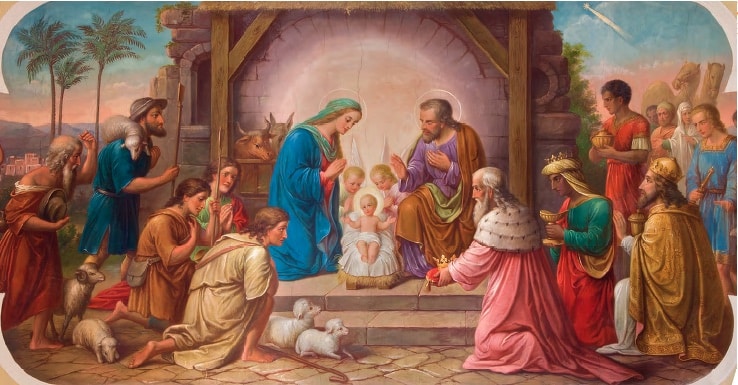
Adobe Stock
The visit of the Magi
Nativity scenes often depict the Magi as showing up on the night of Jesus’ birth — just like the shepherds did (cf. Lk 2:8-12). However, they did not.
Despite them being referred to as “three kings,” the Magi were not kings. “Wise Men” comes closer, but Matthew uses the specific term magoi for them (cf. 2:1).
The Magi were originally a Persian tribe with priestly duties (like the Jewish tribe of Levi), but over time, the term had broadened and was used for anyone who performed ritual activities regarded as in some way similar to those of the magi. Thus, we read about Jewish Magi like Elymas bar-Jesus (cf. Acts 13:6-8).
The Magi who visited Jesus came from a country in “the east” (Mt 2:1) — perhaps Babylonia or Persia — and they arrived as much as two years after Jesus’ birth.
We know this because, when they failed to report back to Herod the Great, he killed “all the boys in Bethlehem and its vicinity two years old and under, in accordance with the time he had ascertained from the magi” (Mt 2:16).
The Magi had told Herod when they first saw Jesus’ star (cf. Mt 2:7), and this would have been between one and two years earlier. (Herod likely rounded the figure up to two years to ensure that his effort would result in the death of the correct child.)
In any event, the Magi did not arrive on the night of Jesus’ birth but considerably afterward, and the Holy Family was either still in Bethlehem or had returned for another visit. They were likely staying with the same family members, and Matthew indicates that the Magi found the Baby Jesus with his mother in a “house” (2:11).
Conclusion
There are a large number of myths about Christmas. Some come from skeptics, such as those who say Jesus couldn’t possibly have been born on Dec. 25 and that this date was chosen to compete with a pagan holiday.
Other myths come from Christians themselves, such as from artistic representations that tend to compress everything about Jesus’ birth into one scene, with the shepherds and the magi present together in a barn on a snowy evening.
It’s natural for Christians to represent the birth of our Savior in art, but we should be aware of the difference between what the Gospels actually say and when artistic license is being taken.
Myths aside, it remains true that our Savior really was born into the world, and on Christmas we honor the truth of this event. Merry Christmas!
Jimmy Akin is the senior apologist at Catholic Answers. He writes from California.
| Christmas reflection from a pope |
|---|
|
“I am addressing this message to every human being, to man in his humanity. Christmas is the feast of man. A human being is born. He is one of the millions and millions of people who have been born, are being born and will be born on earth. A human being, one item in the vast range of statistics. It was not without reason that Jesus came into the world when a census was being held, when a Roman emperor wanted to know the number of subjects in his territory. A human being is an object to be counted, something considered under the aspect of quantity, one of many millions. Yet at the same time he is a single being, unique and unrepeatable. If we celebrate with such solemnity the birth of Jesus, it is to bear witness that every human being is somebody unique and unrepeatable. If our human statistics, human categories, human political, economic and social systems, and mere human possibilities fail to ensure that man can be born, live and act as one who is unique and unrepeatable, then all this is ensured by God. For God and before God, the human being is always unique and unrepeatable, somebody thought of and chosen from eternity, some called and identified by his own name. “It is as it was with the first man, Adam. It is as it was with the new Adam, born of the Virgin Mary in the cave at Bethlehem: ‘You shall call his name Jesus’ (Lk 1:31).” — Pope St. John Paul II, urbi et orbi message, Christmas 1978 |
Join Our Telegram Group : Salvation & Prosperity
